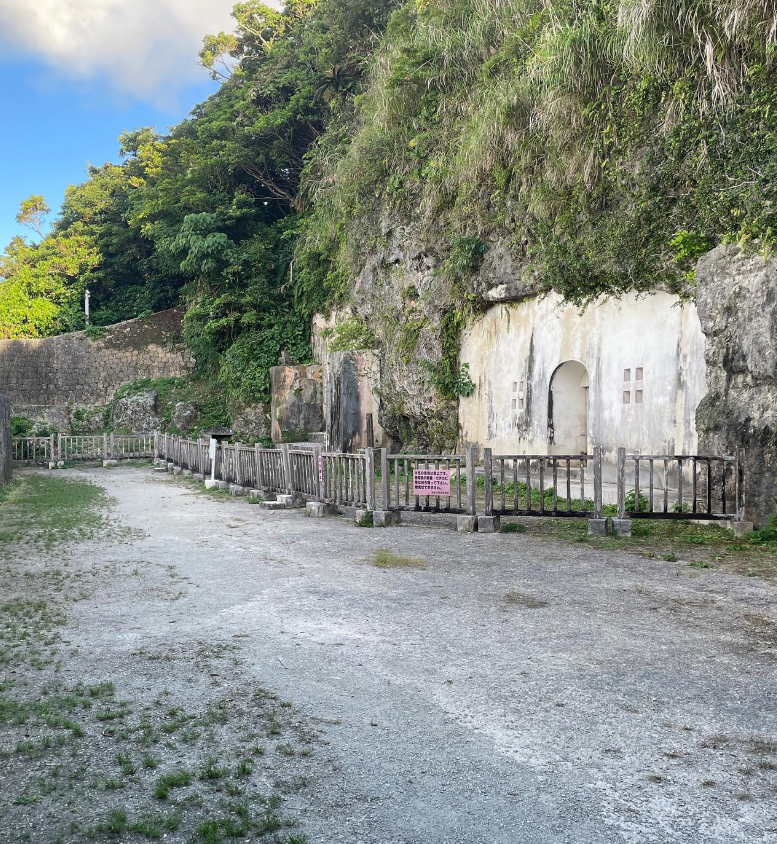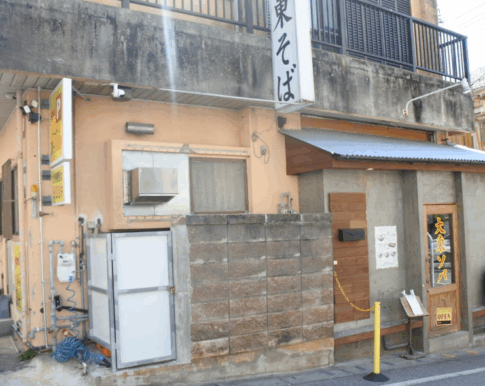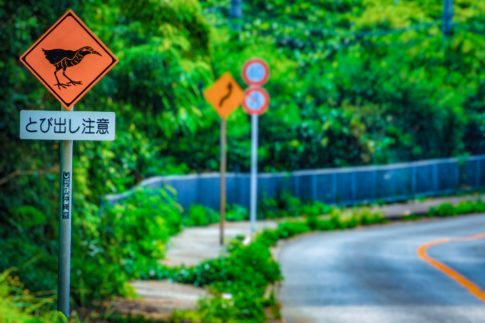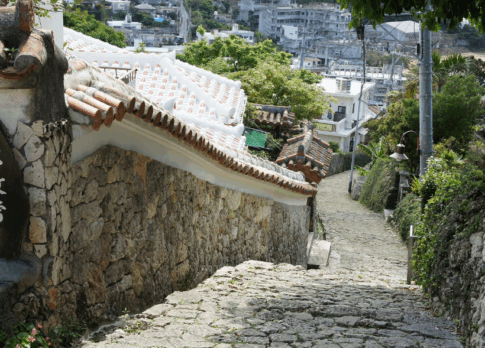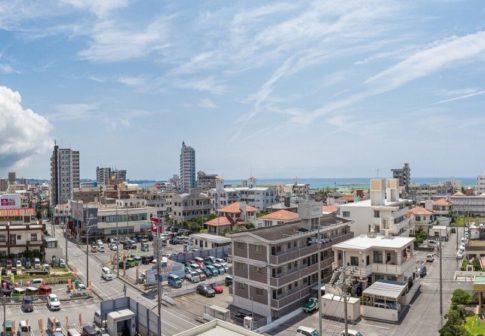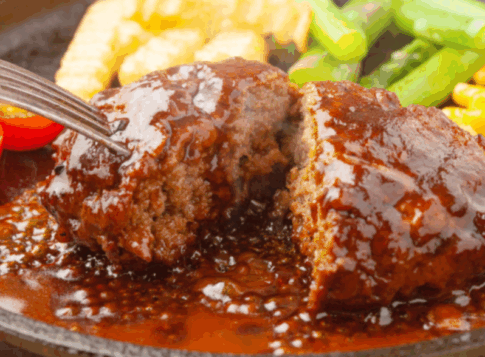About 33 minutes by car from Naha Airport. It is a historical site located in a vast park halfway between Route 58 and Okinawa Expressway in Urasoe City. It is historically very valuable because it is a historic site from the time before the unification of the Ryukyu Dynasty when Urasoe was still the base of power.
Point 1: What is the location of “Urasoe Yodore”?
Urasoe Yodore” is located in the vast Urasoe Grand Park. It is located on a gently sloping hillside, about 10 minutes up the mountain from the park entrance.
There is a museum, a sports park, and a plaza in the park, and several Yodoretsu stand side by side with the Urasoe Gusuku.
At the highest point, you can even see the Shuri Castle. The Futenma Air Base can also be seen from the top of the hill.
This “Urasoe Yodore” was the base of power of the Ryukyu Dynasty before it moved to Shurijo Castle, and is described as such in the article “Urasoe Kou” written by scholars such as Fuyu Iha, who is called the father of Okinawan studies.
This is a mausoleum built in the 13th century by King Yeongjo of the Ryukyu Kingdom, before the Ryukyu Dynasty moved to Shurijo, and renovated in the 16th century by King Shoneng, who was born in Urasoe, where the families of two kings are buried. Yodore“ is a Ryukyuan word meaning ”evening calm,“ and is used to mean ”tomb” because of its serene image.
It is said to have been constructed by excavating a natural cave and became the prototype for tombs in Okinawa.
It takes about 33 minutes from Naha Airport by car.
From Urazoe Maeda Station on the Yui Rail, it takes about 20 minutes on foot.
By bus, surprisingly, it is an 18-minute walk from the “Kamata” stop on the YKB888 Yanbaru Express Bus, or you can also take Ryukyu Bus No. 190 and get off at “Kamata” stop, which takes about 17 minutes on foot without having to change buses.
Point 2: Overview and history of “Urasoe Yodore”!
Around the 12th century, before the unification of the Ryukyu Dynasty, agricultural settlements were established in each region of Okinawa, and leaders such as masters of the land emerged, eventually leading to the three mountains of Minamiyama, Nakayama, and Kitayama.
Urasoe Yodorei,” located halfway up the northern side of the Urasoe Castle Ruins, is the mausoleum of King Eiso (reigned 1260-1299) and King Shonei (reigned 1589-1620), two kings from different eras who were buried next to each other in the Nakayama period.
On the right is King Yeongjo, who ruled Jungsan, and on the left, Sangnyeong of the second Sang royal lineage and his family rest peacefully.
Sangnyeong was a member of the Urasoe family, which was considered a collateral lineage, but he was taken away by the Satsuma invaders in the early 17th century and lost his status as a virtually independent nation.
Was it significant that he was captured by the Satsuma clan and lost his status as an independent nation?
Although he should have been buried in the Tamaryo Mausoleum in Shuri, for some reason he is buried in Urazoe Yodorei.
In 2024, there was a sad incident of graffiti on “Urasoe Yodore,” the pride of Okinawans, but the culprit was arrested and the historic site has been restored and is now at peace again.
The site has undergone only a few renovations since the time of the Ryukyu Dynasty, but the gently sloping, beautiful stone walls have been preserved, presenting us with a cultural elegance that could not have been achieved in the Japanese castle-building culture, even historically speaking.
The site is also visited more by foreigners than by Japanese, which is probably due to the presence of Mel Gibson’s movie “Hacksaw Ridge,” which is based on the theme of the site.
Point 3: Don’t miss the “Yodore-kan” adjacent to “Urasoe Yodore!
The “Yodore-kan” is a life-size replica of the interior of the tomb of King Yeongjo of Urasoe Yodore, located adjacent to the Urasoe Castle Ruins, with three sarcophagi and artifacts excavated from the tomb on display.
High school students and older: 100 yen; elementary and junior high school students outside the city: 50 yen; elementary and junior high school students living in Urasoe City: free. Elementary and junior high school students living in Urasoe City are free of charge, and those with disabilities and their caregivers are free upon presentation of a disability certificate.
The museum exhibits pre-dynastic artifacts, items related to the three dynasties of Shuntian, Yeongjo, and Sadoku, and historical documents from the Battle of Okinawa, which are of great historical value and should be seen not only by Ryukyuans but also by the Japanese.
The interior of the tomb of “Urasoe Yodore” is not open to the public, but here at “Yodore-kan”, the tomb chamber (west chamber) has been completely recreated, allowing visitors to understand the greatness of the king of the Ryukyu Dynasty.
In addition, the kitchen that holds the remains is considered an important cultural property of the prefecture, and exhibitions are sometimes held at the adjacent Urasoe Art Museum.
The tombs of King Eiso and King Shonei, both of whom should have been enshrined in Shuri Castle, are located in Urasoe Yodore, which is less well known and smaller in scale than Shuri Castle, but it is a hidden gem with historically valuable exhibits, a magnificent view of the castle ruins, and a tasteful atmosphere. It is a hidden gem. Please visit the museum and see for yourself.

